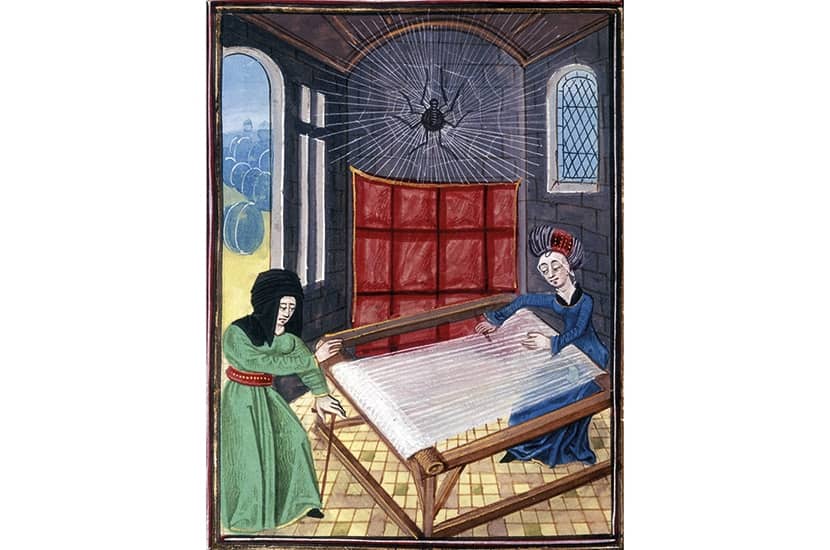What are myths for? Do they lend meaning and value to this quintessence of dust? Like religion, perhaps they help us battle through. In weighing this issue, Charlotte Higgins demonstrates again why the Greek variety have never lessened their grip on the western imagination.
She structures her material around eight women — Athena, Alcithoë, Philomela, Arachne, Andromache, Helen, Circe and Penelope — and in particular around the scenes they weave. ‘I wanted the form of my chosen stories to be expressive in itself,’ she writes in the introduction. And it is. She draws in particular on the rich visual culture that has survived in ceramics, sculpture and frescoes. She also reveals how frequently female characters take control of a story, and how often this happens through the act of weaving, thus highlighting the central role of textiles in the ancient world. The word ‘text’ derives from Latin texere, meaning to weave or compose.
A classicist and now a Guardian journalist, Higgins sticks closely to the original material. These are not retellings in a contemporary setting, like Michel Faber’s (rather wonderful) recent recasting of Prometheus, which features spiteful Amazon reviews and fragments of pizza. We are in the hands of a fine, fluent storyteller (‘Are you ready? Then follow me’), who is properly attuned to what characters look like: Thracians are ‘pale, tattooed, trouser-clad’ and when we first spot Athena, ‘her muscular hand would send the patterned whorl whirling’. Throughout, Higgins deploys direct speech and rhetorical devices such as alliteration and repetition with a light touch, the celestial loom in the Athena chapter ‘so wide that even she, a goddess, must walk up and down, up and down’.
Women were just pretexts for the war. In reality it was the old story: men locking horns over power and status
The use of the vernacular is judicious and entertaining.







Comments
Join the debate for just £1 a month
Be part of the conversation with other Spectator readers by getting your first three months for £3.
UNLOCK ACCESS Just £1 a monthAlready a subscriber? Log in